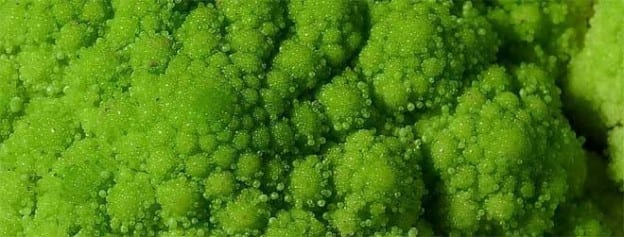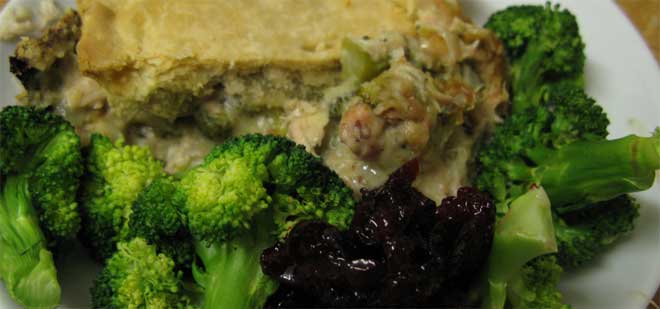
The broccoli is a plant of the cruciferous family, such as cauliflower, cabbage, Brussels sprouts or kohlrabi.
One of its components is glucoraphanin, which can be converted into sulforaphane, although the beneficial effects of broccoli are significantly minimised if the vegetable is boiled. In fact, it is advisable to steam broccoli for a maximum of two minutes to preserve its active principles intact.
These vegetables contain compounds called glucosinolates which are enzymatically converted to isothiocyanates by a plant enzyme called myrosinase, which is released after breaking, cutting or chewing. Enzymes present in the mammalian intestinal tract can also catalyse this conversion. Broccoli contains high amounts of a glucosinolate called glucoraphanin, which is converted to isothiocyanate, sulforaphane.
Broccoli is also an extraordinary source of indole-3-carbinol, a chemical compound that repairs DNA in cells and stops the growth of cancer cells.
However, it should be pointed out that sulforaphane is contained in cabbages, especially broccoli, with the quantity and therefore the effectiveness of the substance varying according to the species of plant used and the climatic conditions in which it is grown, as well as the above-mentioned cooking conditions.
In this sense, glucoraphanin is found in significant amounts in 3-day-old broccoli sprouts where 250 milligrams of sulforaphane in 100 grams is reached.
Sulforaphane, effective against one of the deadliest diseases, cancer
As we have already seen, broccoli has high percentages of sulforaphanea chemical compound, which has been the subject of numerous scientific studies in the last few years. which has been shown to be a potent anti-cancer agent.
Sulforaphane helps prevent cancer in all its stages, from the early stages of uncontrolled cell reproduction to metastasis. The isothiocyanates and glucosinolates in broccoli, a vegetable belonging to the cruciferous family, act by neutralising the potentially carcinogenic effects of many environmental substances. Isothiocyanates increase the activity of phase I and phase II enzymes, which perform a complex detoxifying and antioxidant mechanism in the body.
Sulforaphane, valid in the fight against lung cancer
In particular, there is one type of cancer, with high mortality rates, for which broccoli's star compound, sulforaphane, has been shown to be particularly effective. It is the lung cancerThe disease, nowadays caused in many cases by smoking.
Sulforaphane not only activates the phase II enzymes created by human cells to kill carcinogenic and oxidative products, but also, according to studies at Hopkins University in 1992 led by Dr Talatay, activates the NFR2 protein, which has a potent antioxidant action in the body. And later, in 2008, Dr Malhotra and his team showed that sulforaphane re-establishes NFR2 signalling reduced by tobacco smoke on the stabilising protein DJ-1.
Lung cancer can be considered a degenerative process at the DNA level that transforms lung epithelial cells into tumour cells, called carcinoma. Lung carcinomas cause a huge number of deaths each year. And it is not that there are hundreds of different kinds of diseases lumped together under the term cancer, but that it is a single pathology that expresses itself in different organs.
With regard to the investigations of the positive influence of broccoli intake in combating lung cancerIn the case of mice, we should also mention those carried out on mice. More specifically, C.C. Conaway's research in 2005 found that 1.5 and 5 mg of sulforaphane a day administered to mice was sufficient to paralyse the development of adenocarcinomas. And in 2011, Drs W. Starrett and D.J. Blake published a paper in the Journal of Imnunotoxicology in which they found that just 3mg a day of sulforaphane in mice was enough to activate the NFR2 signalling pathway.
Sulforaphane also helps in the production of peptides that enable the repair of damaged cellular proteins and hinders tumour development by being anti-angiogenic.
Prevention of colorectal cancer
In cultured human cancer cells, sulforaphane can induce apoptosis (programmed cell death) and arrest the cell cycle, both of which are critically important in preventing tumour growth. Sulforaphane induces the so-called phase II enzymeswhich are part of the "detoxification" pathway that cells use to activate potentially harmful chemical carcinogens into harmless forms that can be excreted. Therefore, sulforaphane could help eliminate carcinogens potential, preventing the initiation stage of tumour formation. However, this mechanism does not explain some of sulforaphane's other effects, such as activating cancer cells to die. In cells, DNA is wrapped around proteins called histones. This allows the cell to efficiently package DNA and control the expression of specific genes.
Histones have "tails" that can determine how DNA is accessible to transcription factors, which are proteins that bind to specific regions of DNA called promoters. In a DNA sequence, promoters are placed upstream of the actual gene and contain specific sequences recognised by transcription factors. Depending on the sequences and transcription factors, the gene is either turned on or off. When a gene is switched on, the protein product of the gene is made.
Histone tails can be modified by the addition or removal of acetyl groups. The addition of these groups results in movement of the tail away from the DNA, allowing transcription factors to interact with the DNA. When acetyl groups are removed from the histone tail, the histone wraps around the DNA more tightly, so the DNA cannot interact with transcription factors. An acetylated histone is associated with DNA that has genes that are active, or turned on. Conversely, a deacetylated histone associates with DNA that has genes that are inactive, or turned off. This switch between active and inactive genes is controlled by two groups of proteins called histone acetyltransferases, which add acetyl groups to histones, and histone deacetylases (HDACs), which remove acetyl groups from histones.
The cells contain tumour suppressor genes, whose function is to prevent cells from becoming cancerous. In cancer and precancerous cells these genes are associated with deacetylated histones, which results in their inactivation. Theoretically, if HDACs can be inhibited, these tumour suppressor genes can be turned back on.
When the tumour suppressor genes are turned back on, cancer progression in the cells can be halted and the cancer cells can die. Several HDAC inhibitors have already been discovered.. Since the structural characteristics of sulforaphane are similar to those of known HDAC inhibitors, sulforaphane may exert its chemopreventive activity through HDAC inhibition.
It would be good to investigate other natural substances in food that may also inhibit HDACs. Some of these are allicin from garlic, butyrates, biotin and lipoic acid.
These results were reproducible in cells of colon cancer including an increase in the levels of a tumour suppressor protein.
In addition, Dr Lina Mastrangelo at the University of East Anglia in the UK, working with colon cancer cells in vitro, found that sulforaphane also fights cellular serotonin 5HT receptors, thereby halting tumour progression.
Breast cancer: reduced risk with broccoli consumption
As mentioned above, broccoli and its essential component, sulforaphane, is a potent anticarcinogen in both the early and late stages of cancer. And its action includes many types of cancer, including breast cancer.
Along these lines, in 2003, at Vanderbilt University in Tennessee in the USA, a scientific study led by J.H. Fowke was carried out, according to which the intake of cruciferous vegetables promotes the creation of phase II enzymes and the death of tumour cells, but in addition, with the change in hormone metabolism, it oestrogens are regulated and cell reproduction is stabilised.
In short, women who regularly eat broccoli and vegetables from this family have a significantly lower risk of breast cancer.
Programmed cancer cell death
Sulforaphanein addition to its effect on histone deacetylase, which we have already discussed, it also drives certain tumour suppressor genes and produced by methylation of the cyclin D2 gene, which, after all, what it does is to project a apoptosis or programmed cell death, in this case, of cancer cells.. This has been being investigated in prostate tumour cells, but could be generalised to other cancerssuch as cervical or pancreatic cancer.
Effect of broccoli consumption on other diseases.
In 2003, Dr. X. Haristoy, from the French University of Nancy, published a study in which it was shown that sulforaphane has an antibiotic effect, reaching eliminate Helicobacter pylori bacteria, which had previously been infected in mice.
For type II diabetes sufferers, broccoli is a very convenient food, as it increases lipase, blocking the progression of adipocytes.
The anti-inflammatory and antioxidant properties of sulforaphane reduce the processes of excess production of glucose in the blood and improve the speed of nerve conduction.
In summary, we can say that broccoli has the following effects prevention of many diseasesin addition to cancer, such as, for example:
- Kidney protection
- Arthrosis
- Cardiovascular abnormalities
- Neuroprotective effect
- Asthma
- Chronic obstructive pulmonary disease, or COPD, which many smokers suffer from
The best way to eat broccoli
It is important to repeat that not all cabbages are as rich in sulforaphane as broccoli sprouts.
At the time of preparation, it is advisable not to cook it for more than three minutes. at a high temperature, as this will prevent myrosinase from converting glucoraphanin to sulforaphane, reducing its potential by 30 to 60 percent.

Similarly, if broccoli is blanched before freezing, the transforming effect of myrosinase and thus its fundamental therapeutic properties are lost.
The best way to eat broccoli is to steam it for a few minutes. a short period of approximately 2 minutes or grill it.
People already diagnosed with one of the above-mentioned diseases may opt for the consumption of a sulforaphane concentrate. It is advisable to accompany it with a glass of alkaline water and never with juices, as their acidity does not allow the hydrolysis of this compound.
Incorporate broccoli in salads or with short cooking into your regular diet, you will live longer and better.


3 thoughts on “El brócoli, potente anticancerígeno”
Interesting article, especially concerning the way broccoli is prepared for consumption for cancer prevention or therapy.
what good information helped me a lot about the discovery of broccoli.
How to prepare food with raw broccoli . Is there no risk of indigestion when eaten uncooked?
Comments are closed.